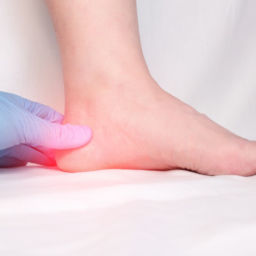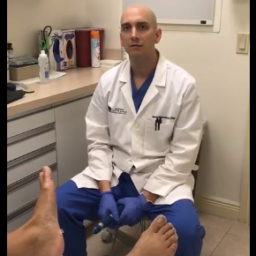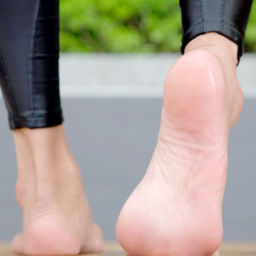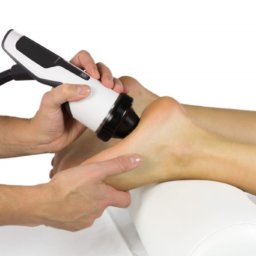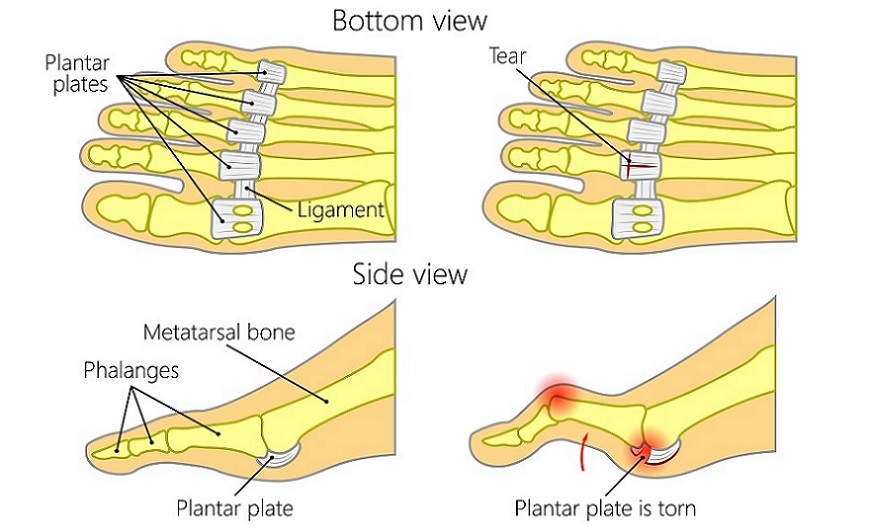
What Are Plantar Plate Tears?
Plantar plate tears are common foot injuries that occur when the ligament beneath the metatarsal heads, typically in the lesser toes, becomes damaged. These tears often result from excessive pressure or bending of the toe, and they can manifest in various ways.
In the early stages, individuals may not notice any specific symptoms. However, as the injury progresses, pain and swelling often develop. These symptoms are indicative of a plantar plate tear, signaling the need for prompt evaluation and treatment.
To diagnose a plantar plate injury, healthcare providers commonly employ MRI scanning, which provides detailed images of the foot’s internal structures. This diagnostic tool helps determine the extent of the tear and guides treatment decisions.
plantar plate tears can be painful and impact daily activities. It’s essential to recognize the symptoms early on and seek medical attention. Treatment options may include rest, physical therapy, orthotics, or, in severe cases, surgical intervention. Timely intervention is crucial for a successful recovery and to prevent further damage to the affected metatarsal bone and surrounding tissues.
What Leads to Plantar Plate Tears? Let’s Discuss Causes.
Plantar plate tears can be caused by various factors, with the most common causes including:
- Excessive Pressure : Prolonged or repetitive pressure on the metatarsal heads, often due to activities like high-impact sports or wearing ill-fitting shoes, can lead to plantar plate injuries.
- Bending the Toe: Repeatedly bending the toes, especially during activities that involve pushing off or excessive toe flexion, can strain and damage the plantar plate.
- Overuse: Overuse of the foot, such as frequent walking or running, can increase the risk of developing plantar plate tears over time.
- Trauma: Sudden trauma, like stubbing your toe or dropping a heavy object on your foot, can result in plantar plate injuries.
- Pre-existing Foot Conditions: Certain foot conditions, like hammertoes or bunions, can place extra stress on the plantar plate, making it more susceptible to tears.
- Aging: As individuals age, the plantar plate may naturally weaken, making it more prone to injury.
- Genetics: Some individuals may have a genetic predisposition to conditions that affect the integrity of the plantar plate.
Understanding these common causes can help individuals take preventive measures and seek timely treatment if they suspect a plantar plate tear to minimize pain and discomfort.
Recognizing the Signs of Plantar Plate Injuries
Plantar plate injury symptoms can vary in severity but often include the following:
- Pain: Pain is a hallmark symptom of plantar plate injuries. Individuals may experience pain in the ball of the foot, particularly beneath the affected metatarsal head. The pain can be sharp, stabbing, or throbbing.
- Swelling: Swelling around the injured area is common. The inflammation results from the body’s natural response to tissue damage.
- Bruising: In some cases, bruising may occur, especially if there was a traumatic incident that caused the injury.
- Stiffness: The affected toe or toes may become stiff, making it difficult to move them comfortably.
- Discomfort While Walking: Pain and discomfort may intensify during weight-bearing activities like walking or running, making it challenging to engage in these activities.
- Sensation Changes: Some individuals may experience altered sensation, such as tingling or numbness, in the affected area.
- Toe Misalignment: Over time, a plantar plate injury can lead to toe misalignment, particularly in the lesser toes, causing them to contract or appear crooked.
It’s essential to recognize these symptoms early on and seek medical evaluation and treatment. Ignoring plantar plate injury symptoms can lead to worsening pain, deformity, and difficulty in performing daily activities. A healthcare provider can diagnose the injury through physical examination and diagnostic imaging like MRI and recommend appropriate treatment to alleviate pain and promote healing.
How To Treat Plantar Plate Pain?
Plantar plate pain treatment is crucial for individuals suffering from discomfort in the ball of the foot, often caused by conditions like plantar plate tears. These injuries typically result from repetitive stress, overuse, or traumatic incidents, leading to pain and instability in the metatarsophalangeal joint (the joint connecting the metatarsal bones to the toes).
Non-Surgical Approaches:
The initial step in plantar plate tear treatment typically involves conservative, non-surgical methods. These may include:
- Rest: Reducing activities that exacerbate pain.
- Anti-Inflammatory Medications: Over-the-counter or prescribed medications to alleviate inflammation and pain.
- Physical Therapy: Targeted exercises and stretches can help strengthen the surrounding muscles and improve joint stability.
- Orthotics: Custom orthotic devices or supportive insoles may be recommended to provide better arch support and reduce pressure on the plantar plate.
Surgical Intervention:
In cases where conservative methods fail to provide relief or when the injury is severe, surgery may be necessary to repair the plantar plate. During surgery, the torn ligament is typically reattached or reconstructed to restore stability to the metatarsophalangeal joint. Surgical options may vary based on the specific nature of the injury and the patient’s individual circumstances.
It’s essential to consult with a foot and ankle specialist for a comprehensive evaluation and personalized treatment plan. Treatment aims not only to relieve pain but also to address the underlying cause of the plantar plate injury. Prompt intervention can lead to improved foot function and a reduced risk of long-term complications. Individuals experiencing symptoms of plantar plate pain should seek professional care to determine the most appropriate course of action for their condition.

